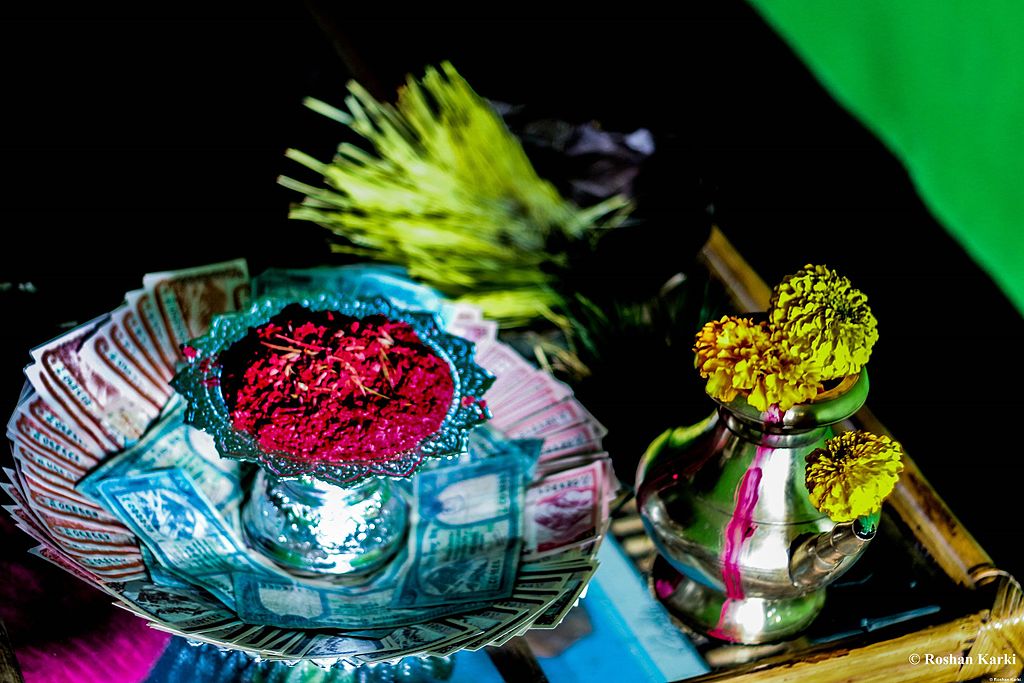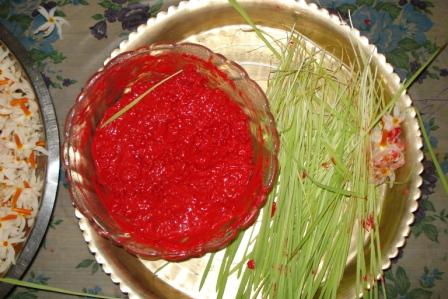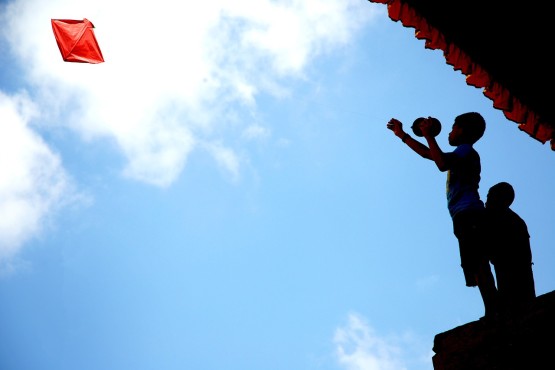- HOME
- Destination
- Adventure Activities
- About Us
- BLOGS
- CONTACT US

Nepal is a multi-religious nation where festival and celebration goes for almost all the years. People celebrate the festival of their religion as per their culture and religion. However, despite the great diversity in religion and the festivals, Dashain is the festival which celebrated throughout the country.
Dashian is also known as Bijaya Dasami or Bada Dashain. It is the greatest and the most auspicious festival of Nepal. People of every religion accepts this festival with great joy and celebration whole-heartedly. During the festival of Dashain, all the offices and companies, an educational institution both private and government, remain closed, so that they can reach to their family and enjoy the festival being near to their loved ones.
Dashain mostly occurs during September or October, starting from the Shukla Paksha of the Ashwin and ending on the Purnima. Dashain is a 15-day long festival, where different rituals are carried out throughout those days.
In the Hindu and Buddhist Newar community of Kathmandu valley, Dashain is celebrated in a quite different way. The nine days from the start of Dashain, which is called as Navaratri carries special importance. Hindu Newars worships the goddess Durga and her various manifestation throughout the Shaktipeeths/shrine of Kathmandu valley. They also practice a custom called Mwohni, which is important for its emphasis on the family gatherings as well as on a renewal of community ties. It is highlighted by a special dinner called Nakhtya,and various community procession of deities called Jatra is also done throughout the three royal cities of Kathmandu Valley.
Although Dashain is the Nepali festival, it is also celebrated in various other parts of the world. It is celebrated in India as Dussehra by worshipping Goddess Durga. Also in the Indian hill states like Sikkim, Assam and Darjeeling, Dashain is celebrated by Hindus of Nepal. Lhotshampa community of Bhutan and the Burmese Gurkha community of Myanmar also celebrate the festival of Dashain.

Dashain Festival
Although, there are various belief regarding the celebration of Dashain and its significance. However, the most important thing this festival tells us is that good always wins over evil.
In the Hindu Mythology, there is a mention that the demon Mahishasur created a terror in the devlok (the world where gods live). Then, Goddess Durga killed all his demons and in the tenth Durga defeated the demon Mahishasur too. The first nine day of Dashain symbolises the battle between the different manifestation of Goddes and Mahishasur.
While as per the Ramayan, the festival is celebrated to mark the victory of Lord Ram over Ravan, who abducted Ram’s wife, Sita.
Now, moving towards the Buddhism, Nepali Buddhist celebrated the festival of Dashain to honour the adoption of Ahimsa and Buddhism by the Ashok, the Indian emperor.
Dashain is the 15-day long festival,and it is celebrated with great joy from the very first. However, among the fifteen days, the most important days are first, seventh, eighth, ninth, tenth and the last, fifteenth.
Ghatasthapana marks the beginning of the Dashain, and it is the first day of the festival. The meaning of “Ghatasthapana” is placing a Kalash (metal pot), which symbolises the Goddess Durga. In Ghatasthapa, a Kalash is filled with holy water, and it gets covered with cow dung, and barley seeds are sown. Then, Kalash is out in the centre of a rectangular sand block, and the remaining place of sand gets seeded with grains too. This ritual is conducted by a priest who after this process asks Goddess Durga for her blessing to the vessel with her presence.
Even after the completion of Ghatasthapana with all the rituals, strict rules should be followed. No one is allowed to enter the room where all this performed, and a male member of the family worships the Kalash twice every day. Then in the tenth day, the seeds will grow up to five or six inches into a long yellow grass, which is a sacred grass and called as jamara.

Bamboo Swing during Dashain
In Phulpati, a royal Kalash, banana stalks, jamara and sugarcane ties with red cloth are brought by Brahmins from Gorkha inside the Kathmandu valley. Then, the Phulpati is taken to the Hanuman Dhoka Royal Palace by the time the occasion ends in Tundikhel, where a great parade is held. In this day, hundreds of government officials dressed in formal way gather in Tundikhel to witness the event. The king used to observe the ceremony, but as the king is overthrown, President has taken over all the social and religious role of king.
Maha Asthami is the eighth day. In this day, the Goddess Kali is appeased by the sacrifice of animals. Goddess Kali is the fiercest manifestation of Goddess Durga.
The many rituals and ceremonies highlight the ninth day of Dashin. In this day, official military ritual sacrifice is held in of the Hanuman Dhoka royal palaces, the Kot courtyard. Also, Vishvakarma, who is the god of creation is also worshipped.
It is the tenth and the most important day of the whole festival of Dashain. In this day, elders put tika (mix of rice, yoghurt and vermilion) and jamara to the younger one. Along with tika they also give Dakshina and blessing of success and well-being in their life. People travel a great distance to put tika from the hand of elder ones. This particular ritual of receiving tika from the elder relatives has helped in the renewal of the community relation. Family members gather together, put the tika from the elder one and they have different foods and drinks and enjoy the time of being together.

Dashain Tika
This is the fifteenth and the last day of Dashain. It is the full moon day and the meaning of “kojagrata” is “who is awake”. There is a belief that in this particular day Goddess Laxmi, who is the Hindu Goddess of wealth visits earth and gives wealth to those who are awake all night.
Dashain is the greatest festival of not just Hindu, but of Nepal as a whole. As Dashain approach, various fun activities are done with friends and families which increases the excitement even more and fills us with more festive mood.
In Dashain, wearing new clothes and eating meat is a very popular thing. Although meat is eaten the whole year, in Dashain eating meat is also a kind of celebration. People generally eat meat with beaten rice. Vegetarians eat food made from milk product like cheese, butter, yoghurt and so on.
Also, flying kites and playing cards are the very popular custom in Nepal during Dashain. Flying kites is fun, and it also has meaning. It is a way of telling God to not to cause rainfall anymore. While kids enjoy flying kites outsides, adults play cards for fun and money inside.

Kid flying Kite
Bamboo swings are also very popular in Nepal. They are constructed by following the traditional style with bamboo and ropes. Bamboo swings are constructed in the first day of Dashain and are dismantled after the Tihar, which comes after Dashain. Fairs are also held in the various parts of the country.
This year Dashain starts from October 10/Aswin 24, which is the day of Ghatasthapana. Then the tenth and the main day of Bijaya Dashami is celebrated in October 19/Kartik 2. And, this joyous festival ends on October 24/Kartik 7 with Kojagrata Purnima.
Your email address will not be published.Required fields are marked *
You must be logged in to post a comment.
0 Comments on "Dashain: The Greatest Hindu Festival of Nepal"